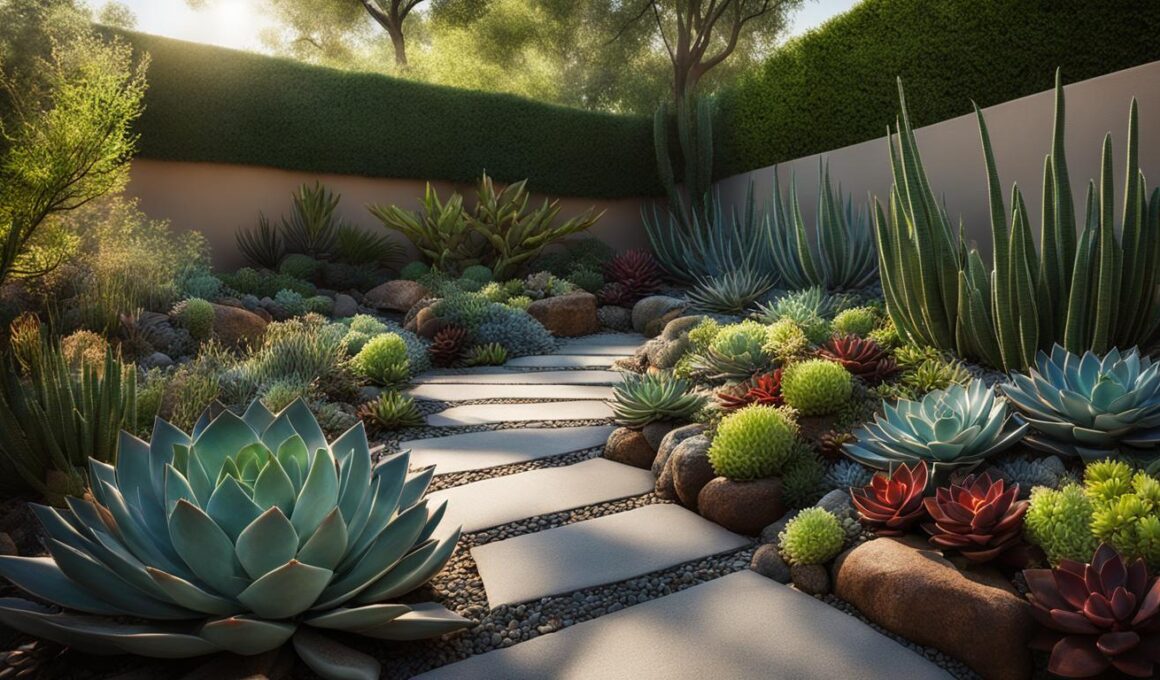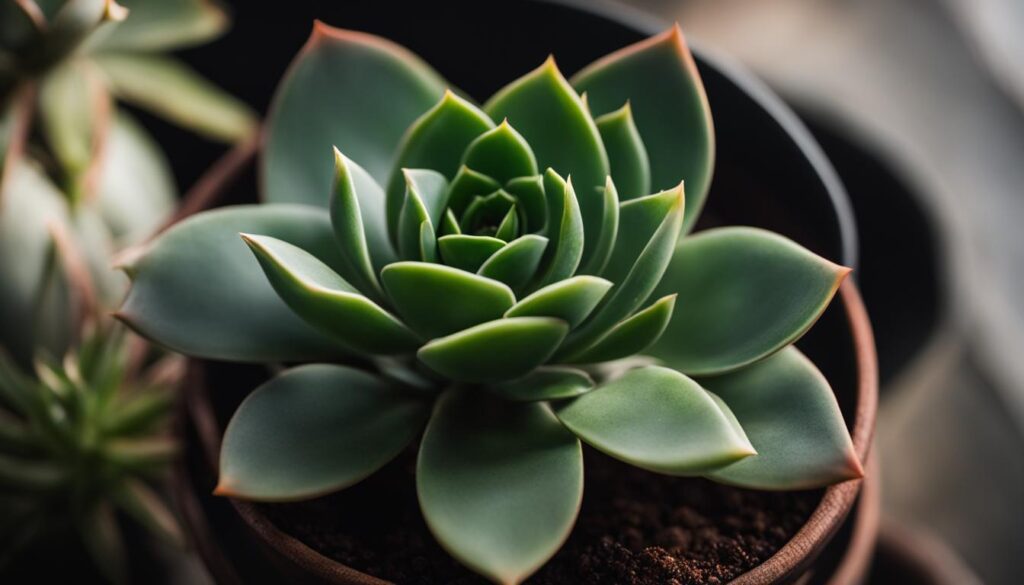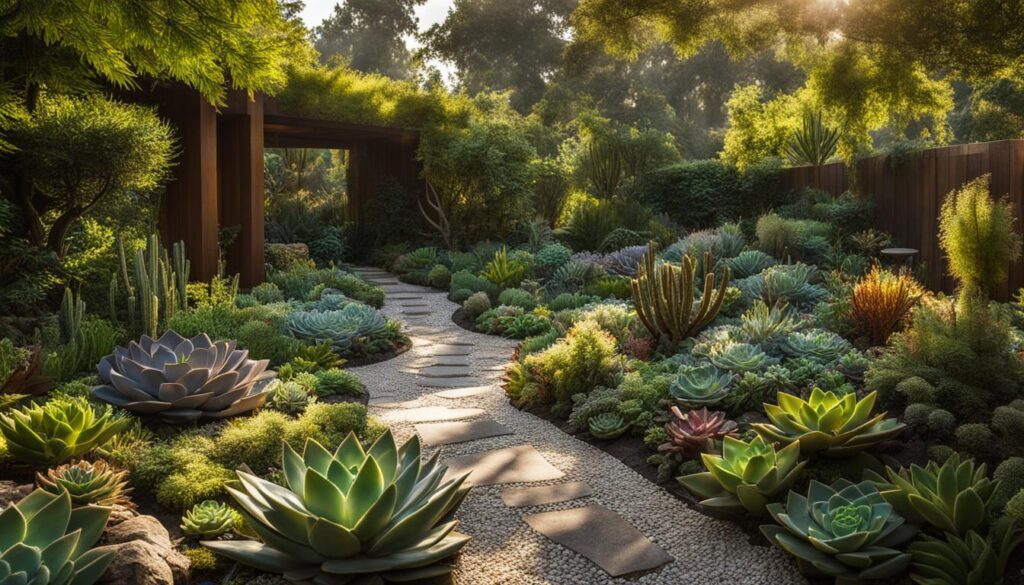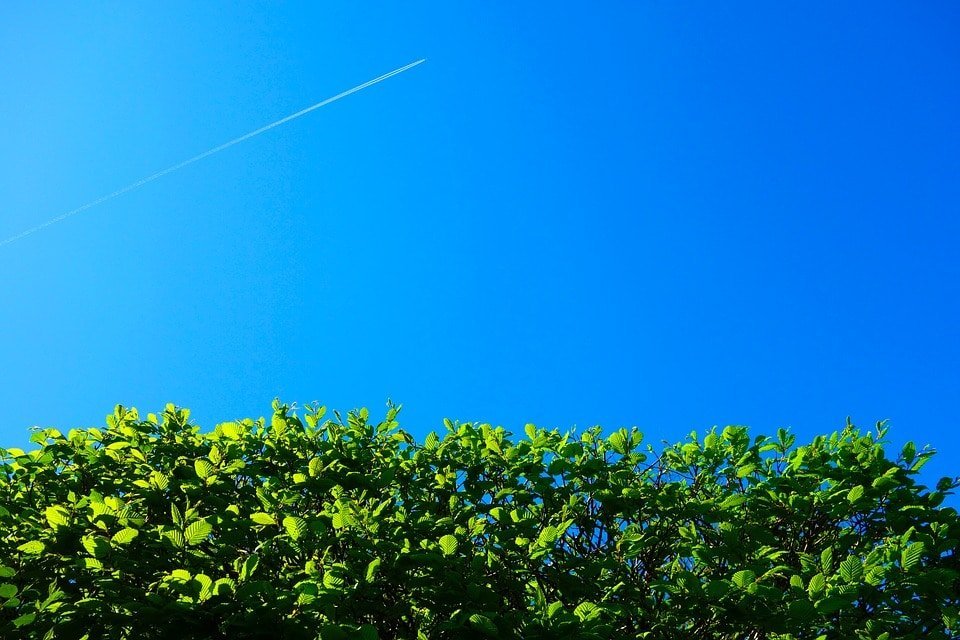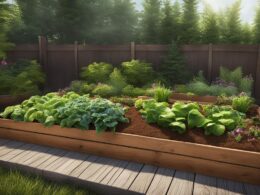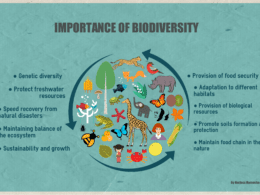Contrary to popular belief, some shade-tolerant succulents can thrive in environments with lower light levels. If your home or outdoor space lacks the bright conditions that many plants desire, selecting suitable low light succulent varieties can still create a lush and green oasis. It’s essential to understand the difference between succulents that are merely shade-tolerant and those that genuinely require shade to thrive, as even shade-tolerant species might develop different habits or appearances when sunlight is insufficient.
Key Takeaways
- Some succulents can thrive in shaded or low light conditions, contrary to popular belief.
- When deciding on suitable plants for your space, select low light succulent varieties to ensure success.
- There is a difference between shade-tolerant succulents and those that require shade to thrive.
- Shade-tolerant species may change habits or appearances if sunlight is insufficient.
- Understanding the unique needs of each shade-loving succulent is essential for maintaining their health and beauty.
Unveiling the Myth: Succulents in Low Light Conditions
Contrary to popular belief, succulents and cacti do not always require intense sunlight. In fact, some varieties can thrive in partially shaded or even fully shaded environments. Understanding these exceptions to the general sunlight-loving character of succulents will help you identify low light succulents, as well as tailor your succulent care in shade for optimal growth.
Rooms that do not receive direct sunlight but still maintain well-lit conditions, such as those with windows facing east or west, can provide an ideal habitat for succulents that like shade. These environments allow for shade-growing success, enabling your shade-tolerant succulents to flourish equally as well as their sun-loving counterparts.
Low light succulents come in a variety of species, each with its unique attributes and care requirements. If you are seeking a diverse selection of succulents for your shaded space, consider the following recommendations:
- Haworthias: Compact and resilient, these rosette-forming succulents will happily grow in indirect light, often featuring striking bands or patterns on their leaves.
- Sansevierias: Commonly known as snake plants, these low light succulents showcase tall, upright leaves with bold variegation, adding a touch of visual interest to your space.
- Kalanchoes: Sporting fuzzy leaves and charming flowers, this group of plants thrives in both bright and partially shaded conditions.
- Rhipsalis: This epiphytic cactus species is accustomed to growing in the dappled shade of tree canopies and makes an excellent choice for indoor spaces with low to medium light exposure.
Aside from selecting the appropriate species, it’s important to monitor the health of your shade-tolerant succulents. Watch for signs of etiolation, where plants stretch toward the light, or a dulling of their vibrant colors. Adjust the light exposure or move the succulents to a brighter location if needed to ensure optimal growth and vitality.
Remember, while many succulents prefer direct sunlight, there are various species that can tolerate or even thrive in shadier conditions. By understanding the unique requirements for low light succulents and providing the necessary succulent care in shade, your shaded space can be filled with a lush, verdant display of these exceptional plants.
Understanding Light Needs for Different Succulent Varieties
A diverse range of shade tolerant succulent species exists, each having unique light requirements to maintain optimal growth and health. While these varieties can thrive in shadier conditions, they still need a certain amount of light to survive and flourish. Recognizing the signs of low light stress and understanding the light requirements for different succulents will help ensure their longevity and wellbeing.
The Diverse Range of Shade Tolerant Succulents
Among the shade tolerant succulents are species native to various environments with unique light conditions. Examples include:
- ZZ Plant (Zamioculcas zamiifolia): Native to African forests, this plant thrives in partial to full shade and is extremely low-maintenance.
- Mistletoe Cactus (Rhipsalis baccifera): This epiphytic cactus originates from the humid and shady environments of southeastern Brazil and other tropical regions, making it well-adapted to low light conditions.
- Christmas Cactus (Schlumbergera): Also native to Brazil, this cactus prefers indirect light and a humid environment.
- Haworthias: These small and slow-growing succulents are capable of enduring lower light levels, making them ideal for indoor cultivation.
- Hoya: Popular for their attractive foliage and fragrant flowers, Hoya plants are well-suited for shadier environments.
- Rebutia: Some species within the Rebutia genus can successfully manage in reduced light, but still require a bright spot for optimal growth.
It’s essential to consider the specific light needs of each species and adapt their surroundings accordingly to provide the best conditions for growth.
Identifying Signs of Insufficient Light in Your Succulents
Despite their shade tolerance, succulents may still exhibit signs of stress if the light conditions they’re exposed to are too low. To maintain the health of your succulents, it’s crucial to monitor these succulent light deficiency symptoms and respond accordingly.
- Etiolation: This term refers to the unnatural elongation of a succulent as it stretches towards the light. Plants like the Jade Plant can suffer from this condition if the light is insufficient.
- Color changes: A sign of low light stress can be observed in the fading or loss of vibrant coloration in certain succulent varieties, like the loss of red tips in ‘Gollum’ jade.
- Decreased compactness: Succulents may become more spaced out between leaves or segments when light levels are inadequate, which can make the plant lose its compact appearance.
Identifying and addressing these symptoms in a timely manner will help prevent lasting stress or damage to your shade-grown succulents.
Optimizing Your Space: Best Practices for Shade-Growing Succulents
When growing succulents indoors or designing a succulent garden in shaded areas, selecting the right species and following appropriate care guidelines is essential for success. Following best practices for shade-growing succulents will ensure that your plants thrive despite lower light conditions.
- Choose shade-tolerant species: Begin by selecting succulents that can adapt to lower light levels. By choosing species known for their resilience in shaded conditions, you increase the chances of cultivating a lush and healthy garden.
- Strategically place succulents: Position your shade-tolerant succulents around well-lit areas of your home that do not receive direct sunlight. This can include areas close to west or east-facing windowsills or indoor spaces where diffused light is still available. Avoid placing them in extremely dark corners or spaces where little to no natural light penetrates.
- Rotate regularly: To ensure your succulents receive enough light from all angles, consider rotating them every few weeks. This will prevent them from becoming lopsided as they might lean toward the source of light if placed in one position for an extended period.
- Optimize your garden design: Consider your existing succulent garden design and look for ways to incorporate shade-loving succulents. Be creative with your arrangement and placement, ensuring that each plant is able to flourish despite differing light requirements.
Understanding the different light needs of succulents can go a long way in successfully growing them in shaded areas. To help you make an informed decision when selecting shade-friendly species, refer to the table below for a few prime examples:
| Succulent | Light Requirement | Additional Care Considerations |
|---|---|---|
| Zamioculcas zamiifolia (ZZ plant) | Partial to full shade | Requires well-draining soil and should be watered only when the soil is dry |
| Haworthia spp. | Bright, indirect light | Prefers succulent potting mix with good drainage; water sparingly |
| Rebutia spp. | Bright, indirect to filtered light | Needs well-draining cactus or succulent mix; water thoroughly and allow to dry before next watering |
By closely following these best practices when growing succulents indoors and creating your own succulent garden design in shaded spaces, you can successfully cultivate a thriving, beautiful collection of shade-tolerant succulents.
Curating Your Shady Succulent Garden: Top Picks That Thrive in Low Light
Creating a shady succulent garden involves selecting varieties that not only thrive in lower light conditions but also provide visual appeal and diversity. Our top picks for the best succulents for shade can transform indoor or outdoor spaces with their vibrant colors and unique shapes, offering endless possibilities for thoughtful combinations that are well-suited to low light conditions.
| Common Name | Botanical Name | Characteristics | Care Tips |
|---|---|---|---|
| ZZ Plant | Zamioculcas zamiifolia | Known for its glossy leaves and graceful arching stems, the ZZ plant is a popular low light indoor plant. | Allow soil to dry between waterings. Thrives in low to medium light, but can tolerate bright indirect light as well. |
| Snake Plant | Sansevieria | With tall, elegant leaves in shades of green, the snake plant is a hardy and low maintenance low light succulent. | Water sparingly; position in low to medium light environments. The plant can also thrive in brighter light with some protection from direct sun. |
| Panda Plant | Kalanchoe tomentosa | Sporting fuzzy leaves with a silver sheen and rust-colored tips, the panda plant is a unique and textural addition to any shady space. | Avoid overwatering; place in bright, indirect light or partial shade. Can tolerate lower light but may grow more slowly. |
Designing a shaded succulent garden is all about choosing the right plants for your specific environment. The selections listed above are known for their resilience and adaptability to low light conditions.
- Consider the unique attributes of each plant, such as their colors, textures, and growth habits, for a visually stunning garden.
- Analyze your space’s lighting conditions to determine which succulents will thrive and ensure careful monitoring of their light requirements.
- Don’t be afraid to experiment with different combinations of shade-tolerant succulents to create an eye-catching display.
By thoughtfully curating your low light indoor plants, you can create a striking succulent showcase that thrives even in the most shaded environments.
Watering and Soil Tips for Succulents in Shadier Spots
Adapting your succulent care routine to shadier conditions entails a deeper understanding of how evaporation rates and soil moisture influence your plants. In this section, we’ll explore how to adjust your watering schedule and select the best soil mix to ensure your succulents flourish in low light conditions.
Adjusting Watering Schedules for Reduced Evaporation
Watering succulents in shade requires a different approach than those growing in bright locations. Since the rate of evaporation is generally slower in shadier spots, you’ll need to reduce your watering frequency to avoid overwatering your succulents. Keeping a close eye on soil moisture is crucial to ensuring your plants stay healthy and avoid root rot caused by excess water.
Follow this succulent watering guide to tailor your watering technique to shadier conditions:
- Inspect the soil’s top two inches before watering: If the soil is still moist, wait a few days before checking again.
- When watering, ensure you soak the soil thoroughly, allowing excess water to drain away from the roots.
- Avoid a fixed watering schedule: Instead, monitor the soil moisture to determine when your succulents need water based on the specific conditions of their environment.
- During cooler months or seasons, reduce watering frequency as lower temperatures contribute to slower evaporation.
Choosing the Right Soil Mix for Moisture Management
Succulents in shade can be particularly prone to water-related issues, making it critical to choose the right soil mix for optimal moisture management. Well-draining soil is essential in preventing excess water from staying in the soil and jeopardizing your plants’ health due to waterlogged roots or root rot.
Consider using these succulent soil mix options designed for efficient moisture management:
- Cactus and Succulent Soil Mix: Specially formulated soil mixes for cacti and succulents provide excellent drainage, helping to prevent root rot in shaded growing conditions.
- DIY Soil Mix: Create your custom mix by blending regular potting soil with inorganic materials such as perlite, pumice, or coarse sand. A recommended ratio is two-thirds potting soil to one-third inorganic substance for the best drainage.
If you’re growing your succulents indoors, consider the best soil for indoor succulents to promote healthy growth. Premixed commercial blends formulated for indoor conditions ensure your plants receive the necessary nutrients they need to thrive even with limited light exposure.
Designing with Shade-Loving Succulents: Creative Ideas and Inspiration
Shady areas offer unique opportunities for creative shade-loving succulent design. By combining different species and arranging them in innovative ways, you can turn any darker corner of your garden or home into an unexpected oasis of succulent variety. Below are some succulent arrangement ideas that you can use as inspiration for your own shady succulent garden.
- Vertical gardens – Make use of vertical spaces by creating a succulent wall or installing hanging planters with shade-tolerant succulents such as Hoya or sedum. These options not only save floor space but also add an interesting visual element to your shaded area.
- Combination plantings in hanging baskets – Create a lush display of shade-dwelling succulents by combining them in hanging baskets. Choose species with different textures, sizes, and shapes to add visual interest, such as Hoya, Mistletoe cactus, or Christmas cactus.
- Understory plantings – When designing a shaded garden outdoors, consider using shade-loving succulents as understory plantings beneath taller, sun-loving plants. This tactic utilizes spaces that may otherwise go unused, and also provides a unique, layered look to your garden.
- Container gardens – For those with limited space or who wish to easily move their plants, container gardens are an excellent solution. Group different shade-tolerant succulents in attractive pots, varying their shapes and sizes to create a visually appealing composition.
| Shade-Loving Succulent | Description | Optimal Growing Conditions |
|---|---|---|
| Hoya | Hoya, also known as the wax plant, has thick, glossy leaves and fragrant, star-shaped flowers. There are several species of Hoya, each with unique features and requirements. | Well-draining soil, moderate to high humidity, and bright indirect light. |
| Mistletoe Cactus (Rhipsalis) | Mistletoe cacti are an epiphytic species native to tropical regions, which means they grow on other plants for support. They have long, trailing stems and small, white flowers. | Well-draining soil with added organic matter, moderate to high humidity, and bright indirect to low light. |
| Christmas Cactus (Schlumbergera) | Native to Brazil, Christmas cactus has long, segmented stems and showy, tubular flowers that bloom during late fall and early winter. There are several different colors available, including red, pink, white, and yellow. | Well-draining soil with added organic matter, moderate to high humidity, and bright indirect to low light. |
When designing your shade-loving succulent garden, the possibilities for creativity are nearly endless. By thoughtfully selecting shade-adapted species and combining them in interesting ways, you can create a lush, inviting space that showcases the unique beauty and resilience of these versatile plants.
The Role of Temperature and Humidity in Growing Shady Succulents
Temperature and humidity play significant roles in the health of shade-grown succulents. While some, like the Christmas cactus, prefer humid conditions reflecting their native habitats, others may require a drier environment. Achieving the right balance is critical to prevent diseases and ensure healthy growth. In this section, we will explore various ways to navigate the challenges of humidity control and shed light on the importance of temperature settings for shade-grown succulents.
Navigating the Challenges of Humidity Control
Managing humidity levels for your shade-grown succulents can seem daunting at first, but understanding their specific requirements will help you maintain an ideal environment for their growth. Here is a breakdown of the recommended humidity levels for some popular shade-tolerant succulents:
| Succulent Species | Recommended Humidity Levels |
|---|---|
| Christmas Cactus | 50% – 60% |
| Haworthia | 40% – 50% |
| Hoya | 40% – 60% |
| Sansevieria (Snake Plant) | 40% – 50% |
To maintain the appropriate humidity for succulents, consider using a digital hygrometer that accurately measures the indoor humidity levels. This will help you identify any fluctuations and make necessary adjustments, like using a humidifier or dehumidifier based on your specific needs.
- You can also mist your succulents occasionally to provide extra humidity, especially during dry, winter months.
- Placing a water-filled tray with pebbles near your shade-grown succulents can help maintain ideal humidity levels, but ensure the plant doesn’t sit directly in water to avoid root rot.
- Remember to space your succulents adequately to promote proper air circulation and reduce the risk of diseases related to high humidity.
Temperature plays an equally vital role in the well-being of your shade-loving succulents. In general, succulents prefer temperatures ranging from 60°F to 80°F (15°C to 27°C).” However, it’s crucial to be aware of any specific temperature preferences of your shade-loving succulents and adjust accordingly to provide optimal conditions for their growth.
Maintaining temperature and humidity for succulents thriving in shady environments will help them grow healthy and robust, making your indoor or outdoor space a lush haven. By understanding the importance of temperature and humidity control, you can ensure the long-lasting success of your shade-grown succulents, nurturing them to their full potential.
Will Increasing Humidity in a Grow Tent Benefit Shade-loving Succulents?
Increasing humidity in a grow tent can indeed benefit shade-loving succulents. These plants naturally thrive in moist environments, and a controlled increase in humidity can help replicate their preferred conditions. By providing adequate moisture in the air, the humidity encourages healthy growth and prevents these delicate succulents from drying out. This creates a suitable microclimate for these shade-loving plants to flourish within the confined space of a grow tent.
Conclusion
With many people believing that succulents are exclusively sun-loving plants, it is important to realize that several varieties can thrive in less illuminated conditions. Growing succulents in low light may not be as challenging as you think as long as you choose suitable shade-tolerant species and provide the correct care. Whether indoors or outdoors, these fascinating plants can bring a unique touch and charm to darker or shadier corners of your home or garden.
When it comes to caring for shaded succulents, knowledge is power. It is crucial to be aware of the various light needs of different succulent varieties, as well as to recognize the signs of light deficiency. Monitoring their shading needs and adjusting accordingly will help your low-light succulents flourish, maintaining their colorful and interesting appearance.
Managing soil moisture and humidity is also critical when tending to shade-loving succulents. Providing these plants with adequate drainage and proper humidity levels will ensure a healthy and vibrant garden even in your home’s low-light spaces. By understanding and embracing the unique characteristics of these resilient plants, you can confidently create a lush environment bursting with captivating and picturesque succulents.





